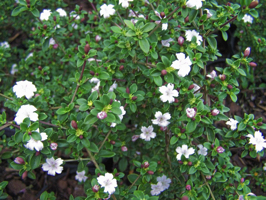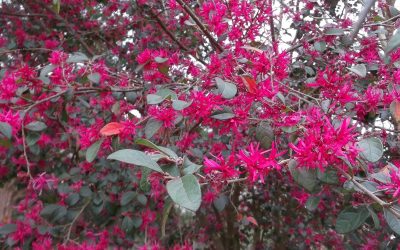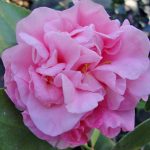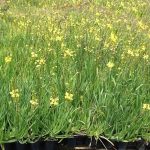
Perhaps the most well known flower in the world, the rose, has been cultivated for centuries. In central Florida they bloom all year long. Our roses produce from five to seven flushed of bloom each year. There are all kinds of rose cultivars and types available, but if possible, buy one that is grafted on Rosa Fortuniana rootstock. In Florida this rootstock produces larger, more vigorous flowering than any other. Roses grafted on Rosa Fortuniana live several years longer than the other rootstock.
Roses are higher maintenance plants. To produce a lot of high quality roses, the plants must be cared for properly. Most roses require weekly applications of fungicide to control black leaf spot disease, a powdery mildew. Insecticides are needed to control mites, thrips and other insects. Regular application of fertilizers (about 7 per year) is required to replace plant foods used or leached from the soil. Alternating fertilizer mixtures, one containing no or low phosphorus levels, is recommended. The no phosphorus label will read 10-0-10 on the fertilizer bag. The alternate fertilizer could be 8-8-8 with trace elements. Natural organic fertilizers are recommended and can be amended to the planting hole. Watering your roses by drip irrigation is the best method, keeping the foliage dry. One to two inches of water a week is all that’s needed, depending upon rain and soil drainage. Water early in the morning if possible; do not water at night.
Light requirement for roses is full sun. They need at least six hours of sun to perform well. Morning sun is the best and afternoon shade is very desirable. Roses should be planted so they don’t receive high winds. Good air movement around your roses will help prevent leaf spot disease. Roses like a moderately to slightly acid soil. A pH range of 5.5 to 6.5 is desirable. Adjust your pH range a couple of times a year. Shoot for a pH of 6.0. The correct pH level insures that nutrients are available to the plant at their optimum level. The soil must have good drainage. If your soil doesn’t drain well, all is not lost. Roses do excellent in raised beds. Mulching your rose bed will conserve moisture, discourage weed growth, and generally make for happy roses. About two inches of mulch to the rose bed will be excellent.
Proper pruning of roses is essential for having productive and healthy plants. Cutting faded flowers could be a daily activity. This will result in bigger flowers, health, and conserve nutrients for new growth. Major pruning should be done in December/January for central Florida roses. Leave at least half the length of each main cane that is one to three years old. At any time of the year you should remove suckers (shoots below the graft), any dead wood or canes showing any signs of disease. To avoid stem dieback cuts should be made above a dormant eye (bud).
Set yourself up with a schedule of rose maintenance. You will be rewarded with an abundance of flowers all year long.
Good Growin’
Jim
Hours of Operation: Monday – Saturday 8:30 AM – 5:00 PM and Sunday 10:00 AM – 4:00 PM
Address: 2010 E Lake Drive, Casselberry, FL 32707
Additional Articles
Cast Iron Plant (Aspidistra)
The cast iron is an old plant known to be a potted plant in Egypt over 3,000 years ago. It was widely grown as a popular houseplant in this country from 1870 to 1940. Do you remember the song “How’s your aspidistra”? It will tolerate a wide variety of growing...
Serissa (Foetida)
Need a small flowering shrub for a shady location? Serissa could be the plant for you.
LOROPETALUM CHINENSIS (Chinese Fringe Bush)
Wow! Is an expression often used when seeing a Loropetalum in full bloom. A former “Florida Plant of the Year”, this hardy bush has become very popular in recent years. This shrub has great leaf color, flowers often and is cold hardy. Its foliage is a reddish-purple...






